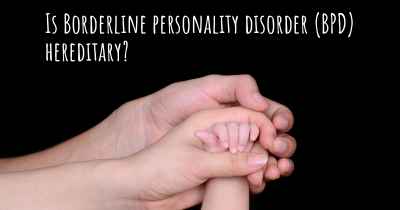What is the history of Borderline personality disorder (BPD)?
When was Borderline personality disorder (BPD) discovered? What is the story of this discovery? Was it coincidence or not?

Borderline personality disorder (BPD) is a complex mental health condition that affects approximately 1-2% of the population. It is characterized by pervasive patterns of instability in mood, self-image, behavior, and interpersonal relationships. BPD was first identified and named in the 1930s, but its history can be traced back to earlier observations and theories.
The concept of BPD emerged from the work of several influential psychiatrists and psychoanalysts. In the early 20th century, Sigmund Freud introduced the term "borderline" to describe patients who fell between neurosis and psychosis. However, it was not until the 1930s that the term "borderline personality" was coined by American psychoanalyst Adolph Stern. Stern used this term to describe patients who displayed symptoms that were difficult to categorize within existing diagnostic frameworks.
Throughout the mid-20th century, the understanding and diagnosis of BPD continued to evolve. In the 1960s, psychoanalyst Otto Kernberg proposed a theory that emphasized the role of early childhood experiences and the development of a fragmented sense of self in individuals with BPD. Kernberg's work helped shape the modern understanding of BPD as a disorder of identity and interpersonal functioning.
During the 1970s and 1980s, the diagnostic criteria for BPD were refined and standardized. The American Psychiatric Association included BPD as a diagnosable condition in the Diagnostic and Statistical Manual of Mental Disorders (DSM) in 1980. The DSM-III criteria for BPD focused on nine specific symptoms, including unstable relationships, impulsivity, and identity disturbance.
Since its inclusion in the DSM, BPD has been the subject of extensive research and clinical attention. The understanding of BPD has expanded beyond psychoanalytic theories to include biological, genetic, and environmental factors. Advances in neuroimaging have provided insights into the neural mechanisms underlying BPD, suggesting that abnormalities in brain regions involved in emotion regulation and impulse control may contribute to the disorder.
One significant development in the history of BPD is the recognition of the impact of trauma on its development. Research has shown that individuals with BPD often have a history of childhood abuse, neglect, or other adverse experiences. Trauma-focused therapies, such as dialectical behavior therapy (DBT), have been developed specifically to address the unique needs of individuals with BPD.
Over time, the stigma surrounding BPD has also begun to diminish. Previously, individuals with BPD were often stigmatized as manipulative or attention-seeking. However, increased awareness and education have helped to challenge these misconceptions and promote empathy and understanding for those living with the disorder.
Today, the treatment of BPD typically involves a combination of psychotherapy, medication, and support from a multidisciplinary team. Dialectical behavior therapy (DBT) has emerged as one of the most effective forms of therapy for BPD, helping individuals develop skills in emotion regulation, distress tolerance, and interpersonal effectiveness.
In conclusion, the history of BPD spans several decades of evolving understanding and research. From its early conceptualization by psychoanalysts to its inclusion in diagnostic manuals and the development of evidence-based treatments, our understanding of BPD has come a long way. Ongoing research continues to shed light on the underlying causes and effective interventions for this complex disorder.
Posted Jun 22, 2018 by flowerright 4150
Adolph Stern an American Psychoanalyst is responsible in the naming of Borderline Personality Disorder. On April 19, 1937, Stern used the term “border line group” while presenting information to the Psychoanalytic Society in New York. This group of patients did not fall under the criteria for psychotic nor into the psychoneurotic group, hence the use of border line. They did not respond well to analytic therapy according to Stern.
Posted Mar 13, 2019 by Shaunda 100








